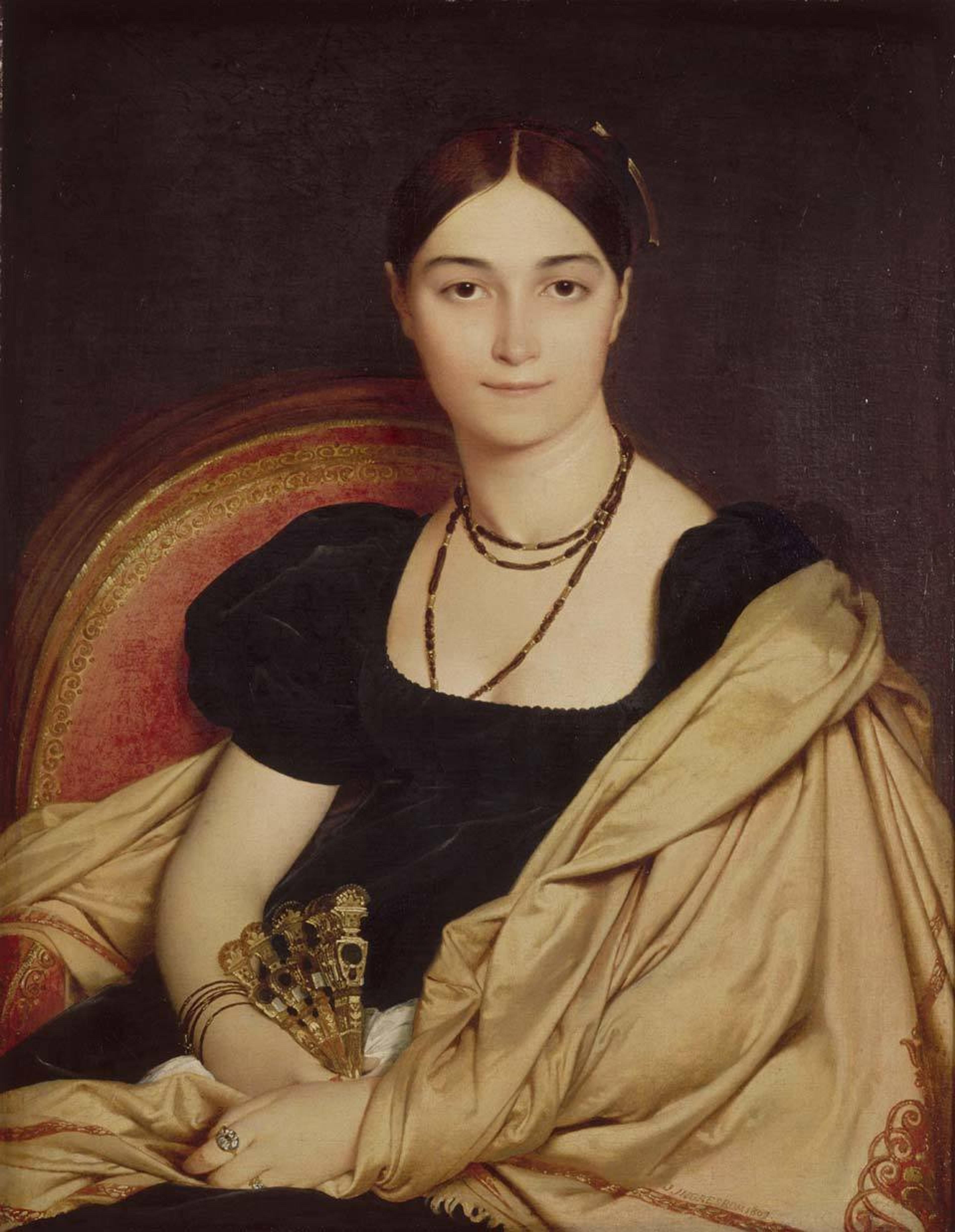The only popular thought about beauty today, the one that has the widest currency in the world, is the idea that beauty lies in the eye of the beholder. It’s a kindly notion. It seeks to make peace between people who have very different tastes. People are delighted by wildly variant things and that’s how it should be, the thinking goes – so don’t get worked up trying to figure out which things are beautiful.
Yet the success of this generous approach keeps attention away from deeper, more important questions. Whether it is a Baroque Cathedral, the face of a child, or the coast of Sweden seen from a plane window, we have all had the mysterious experience of finding something beautiful. But what is actually going on when we find these things beautiful?
In 1795, the German dramatist and poet Friedrich Schiller published a book with a fearsome title – On the Aesthetic Education of Man in a Series of Letters. It has never become well-known, which is a pity, because it contains some of our most useful insights into the nature and value of beauty. Schiller’s starting point is an analysis of the human condition. He wants to understand our delight in what we find beautiful. Instead of asking which things are beautiful, Schiller is curious about what is going on in us when we respond with this distinctive, intimate thrill and enthusiasm that leads us to say ‘that’s beautiful’. Different things might provoke this response in different people. But why do we have it at all?
Schiller thinks of human nature as an arena in which two powerful psychological drives are at work. On the one hand, there is the ‘sense’ drive which lives in the moment and seeks immediate gratification. It craves contact and possession. It can be coarse, as when one yearns to swig great draughts of beer; but it can also be elevated. Schiller associated the sense drive with his friend Johann Wolfgang von Goethe, who longed to see things with his own eyes. Goethe was a direct observer, a natural empiricist who immersed himself in practical detail.
The second drive identified by Schiller was the ‘form’ drive: the inner demand for coherence over time, for abstract understanding and rational order. This drive, thought Schiller, seeks to leave behind the peculiarities of one’s own experience and discover universal principles. It is at the heart of justice – which is not about getting what you want for yourself – and is animated by principle. When we think that a person is entitled to a fair trial, we are motivated, Schiller says, by the rational ‘form’ drive. We are loyal to the abstract, general ideal of due process.
What he’s calling the sense drive and the form drive are powerful impulses in us. But they are often in conflict. The demands of the short term are at odds with the hopes of the longer view. Comfort and ease struggle against a sense of duty and responsibility. The allure of freedom clashes with the longing to be steadfast and rooted in existing commitments.
Schiller’s point is that human nature is fired by two divergent kinds of longing: we can’t hope to see why beauty matters to us unless we pay attention to them both. If we want to understand beauty, we can’t just talk about the things we find beautiful. We have to talk about our lives.
It might look as though Schiller is trying to resuscitate an old religious theme, the struggle between the flesh and the spirit. But there is a crucial difference. Thinkers ranging from St Paul to Immanuel Kant have all believed that one of these aspects of our nature – which they usually call the spiritual or rational – should triumph. But Schiller does not believe that one side is more important than the other. Rather, the two sides are in need of each other. If the sense drive dominates, we become brutish and superficial. If the form drive is too dominant, we become dry and callous. We need the two to interact harmoniously in order to see the role that beauty can play in our lives.
For Schiller, true beauty is whatever speaks powerfully to both sides of our nature at the same time. When we find something beautiful, we are called towards a vision of harmonious perfection. This is not only a quality in the object, but a longing in ourselves.
Take the statue of Apollo – known as the Belvedere – which allows us to feel the sensuous joy of a body at the peak of development and ease. Apollo looks strong but not too muscular, and agile but not in any way skittish or unstable. We admire, and maybe desire, his physique. Has he just unleashed an arrow, we wonder, or is he about to set the arrow to the string? Either way, he is active, energetic and concentrated, and our sense drive responds powerfully to him.
At the same time, the form drive is also at work in the Belvedere. We respond to the artistic structure to it, its proportion and unity. The hands extend away from the body but not too far. The technical problem of how to imply motion in a still object has been elegantly resolved. The folds of the cloak round the neck and over the arm have been coaxed into a clear rhythm. Here is a man of self-possession and poise.
In this case – a case of beauty – both drives are at full power, but they do not work against one another. Instead, they co-operate, and Schiller’s point is that to experience a statue in this dual way is to find it beautiful. More importantly, these experiences of beauty teach us how we should be. Not that we should try to adopt the pose or hairstyle of Apollo, or to pick up a bow and arrow. Rather, we should seek to realise in ourselves the fusion of the drives embodied by the sculpture.
Schiller was obsessed with the way we seem to be able to read a person’s character in his or her face. And he thought that the beauty of a face was – as with the statue of Apollo – dependent upon the implied integration of the otherwise divergent drives that power our lives.

The portrait of Madame Devaucay, painted by Jean-Auguste-Dominique Ingres in Rome in 1807, exemplifies his ideal. In one sense, the portrait is highly organised. Each detail has been manipulated so that it fits with every other. The rounded back of the chair is calculated to take the eye to her mouth, but it also balances the curve of her draped arm. The point of her chin is exactly halfway between the top of her head and the neckline of her gown. Nothing is left to chance. A hugely determined will to order dominates the image, meaning that the form drive is at full stretch. And this clarity and organisation appear to belong to the sitter as well. She seems calm, lucid and intellectually elegant.
Equally, however, the sense drive is given free rein. She appears merely to be sitting in her natural way, as we might encounter her by chance in the corner of a salon. Maybe in a moment she will laugh or adjust her necklace. For all her finery, she looks as if she would be warm and understanding – the perfect person with whom to discuss one’s troubles. The beauty of the painting is the way it calls simultaneously to our need for control and our longing for tenderness and intimacy.
It’s not a problem for Schiller if someone happens not to be moved by the particular examples that excite him. What matters is that something does, and that something is what we call beautiful. This explains why beauty can be so moving – why it can make us weep. When we recognise beauty in a piece of music, or the graciousness of someone’s conduct, we see things that we know we have neglected or betrayed, and we feel an astonishing combination of anguish and delight.
to regard beauty as a luxury adornment or a social signifier was to miss the true potential of the experience
Like many people today, Schiller worried that beauty was too connected to social status. And indeed, many loathsome people own beautiful things, and the possession of these objects does not seem to make them more humane or especially gracious. Schiller was convinced that to regard beauty as a luxury adornment or a social signifier was to miss the true potential of the experience, because for him the point of beauty is to elevate the soul.
Schiller was an enthusiastic reformer, desperate to usher in a newly just and noble society. But he had grown pessimistic about what political reform could achieve. In his lifetime, he had watched the French Revolution degenerate into terror and what looked to him like a combination of mob anarchy and cold, bureaucratic tyranny. He saw the ferocious ‘san-culottes’ of his day as the sense impulse acting alone, and the French government’s Committee of Public Safety as the form drive manifested in a fanatical devotion to purity. The Revolutionary situation in France seemed to exemplify – on the scale of society as a whole – what happens when the basic drives of human nature are split off from one another.
Schiller’s diagnosis of the ills of society ran parallel to his account of the strife within an individual life. What was missing, he argued in both cases, was a full, harmonious humanity, and he thought it would stay missing – both in the leaders and the people. And he came to the unnerving – but perhaps correct – conviction that ambitious social reform would always be frustrated until a much larger number of people had reached a higher level of inner development of the sort enabled by beauty.
Sometimes, we seek to understand thinkers such as Schiller out of curiosity, or to understand a larger trend in the history of ideas. We are fascinated to learn how the cosmos was conceived before the revelations of modern science. Or how prehistoric times were understood before the advent of archeology. We encounter such thoughts as observers, sympathetic perhaps, but not as potential converts. We do not expect to be convinced. We have progressed, after all, and we live in a new world. But every once in a while we encounter ideas from the past that are sorely missing from the present. And so it is with Schiller, whose notions about beauty are more than a dry record of what one man living in the town of Weimar at the end of the 18th century happened to believe. Instead, they are a guide, for how we might elevate ourselves with beauty today.






